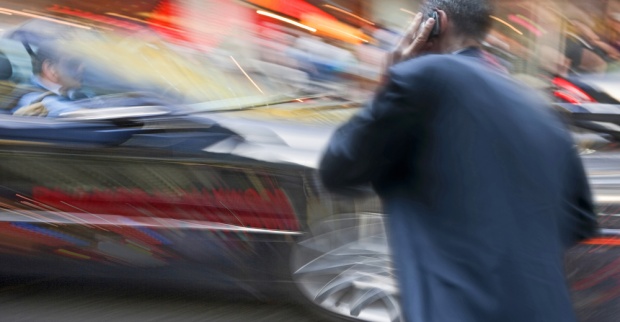From the dreary days of dial-up through to the ultra-slick broadband of today, the communication networks around the globe have continued to evolve at a rate of knots that makes them unrecognisable from their predecessors.
All the while, the mobile phone industry has kept steady pace with its own giant leaps from the painstaking days of WAP-based browsing to today’s incredible 4G experience which now promises speeds of up to 10 times faster than the 3G of yesteryear. However, whilst 3G can be found in the majority of our planets nooks and crannies, 4G has, and still does require, a big upheaval in infrastructure to accommodate the faster speeds.
With this in mind, consumers are faced with a conundrum when it comes to deciding between the two major players in 4G roaming – Vodafone and EE. Although other networks are currently working on plans to develop and enhance their own offerings, these two giants of the mobile world are leagues ahead of anything else, but with some key differences between each of them. With 42 million trips now being made each year from the UK to 4G-enabled roaming zones, here’s a handy reference guide so that you can find out for yourself which of the big two could be best for you.
Vodafone
If you’re regularly jet-setting across the globe then one of the major factors in selecting an appropriate network is going to be the sheer number of countries that are covered. Whilst 4G is still in its relative infancy as nations look to integrate the new technologies that are required, there has been a behind the scenes battle between Vodafone and EE as they compete for the greatest roaming coverage. As recently as October 2014, Vodafone announced that a further 19 new destinations had been added to its available destinations list, totalling an impressive 23 countries in all.
Cost is always going to be a major consideration of the phone buying public and Vodafone seem to be erring on the side of caution when it comes to what they charge. If travelling to a specified Vodafone “EuropeZone” country, then you can access your UK minutes, texts and data for £3 per day without any other hidden costs. If you’re travelling to a “WorldTraveller” Zone then it goes up to £5 per day, but that will allow you to call any UK numbers based on your standard tariff, including your free allowances. Phone Shop by Sainsbury’s offer one of the most transparent guides on the impact that roaming and international calling can have on tariffs if you’re still unsure of the details.
As an overview, Vodafone 4G roaming is now available in the following countries:
Europe: Austria, Belgium, Czech Republic, France, Germany, Greece, Ireland, Italy, Netherlands, Norway, Portugal, Romania, Russia, Spain and Switzerland.
N. America/S. America: USA, Canada and Brazil
Asia/Oceania: Hong Kong, Singapore, South Korea, Taiwan and New Zealand
EE
The country’s largest mobile network operator sat at the centre of the launch of 4G back in 2013 when a contract worth over £500m was agreed to allow them to pioneer the service in the UK. With all that experience under their belts, they certainly know what they’re doing.
However, since this spritely launch they have been overtaken by Vodafone in terms of their reach, but still cover an impressive 16 countries after their initial successes in France and Spain.
EE has decided to continue with its acclaimed bolt on packages as, like Vodafone, they are keen to avoid their customers accidentally racking up astronomical bills and damaging consumer trust. Rather than splitting their qualifying regions into zones, EE will allow you to purchase a 50MB EE data add-on pack for £3 per day. This can be topped up depending on usage, but in effect it achieves the similar result to Vodafone in limiting the overall spend.
EE is available in the following countries:
Europe: France, Spain, Norway, Germany, Italy, Luxembourg, Moldova, Netherlands, Poland, Portugal, Russia and Switzerland.
N. America/S. America: Canada
Asia/Oceania: Saudi Arabia, UAE and South Korea.
Plans were announced last year by the European Union to end roaming charges from mobile providers. The debate got underway this week in Italy as to how to implement this new strategy. The coming months may be the last opportunity for providers to make a quick buck from roaming customers, so use it to your advantage by targeting the countries that you’re likely to travel to most over the next year as it’s unlikely to be an issue beyond 2015.


